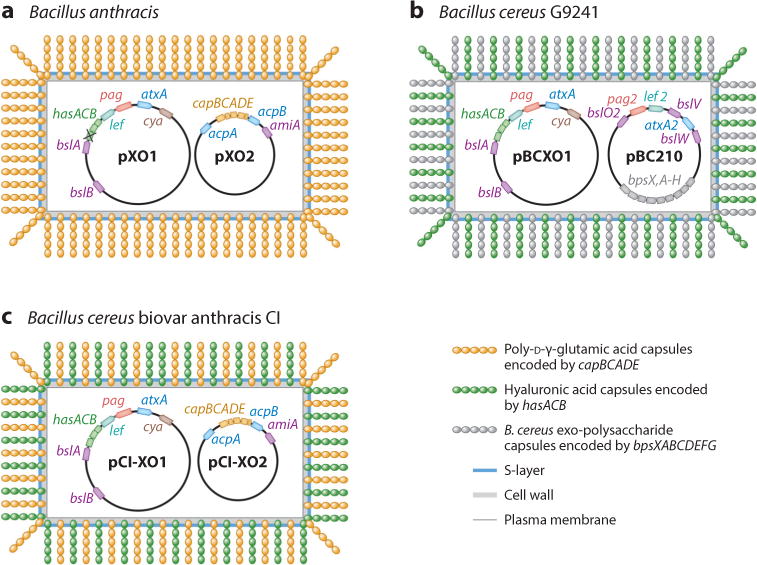Figure 1.

B. cereus s.l. isolates causing anthrax and anthrax-like diseases: (a) B. anthracis with its two virulence plasmids, pXO1 and pXO2; (b) B. cereus G9241, harboring pBCXO1 and pBC210; and (c) B. cereus biovar anthracis CI and plasmids pCI-XO1 and pCI-XO2. B. cereus G9241 and biovar anthracis CI have a third small plasmid not shown here. In addition to toxin genes (pag, lef, and cya), B. anthracis virulence plasmids pXO1 and pXO2 carry genes for poly-D-γ-glutamic acid (PDGA) capsular synthesis (capBCADE) and hyaluronic acid (HA) capsular synthesis (hasACB); the hasA gene, however, carries an inactivating mutation. The plasmids also carry three genes for B. anthracis S-layer-associated (BSL) proteins: bslA, bslB, and amiA. Virulence gene expression is regulated by the product of atxA, which activates toxin, bslA, and capBCADE gene expression in response to a host signal (increased CO2 concentration). The capBCADE operon is coregulated by acpA and acpB. B. cereus G9241 synthesizes HA (intact hasACB gene cluster). pBC210 encodes genes for three BSLs (bslO2, bslV, and bslW), the Certhrax toxin (pag2, lef 2), an atxA-like regulator (atxA2), and B. cereus exo-polysaccharide (BPS) (bpsXABCDEFG). B. cereus biovar anthracis capsulation includes both PDGA and HA.
